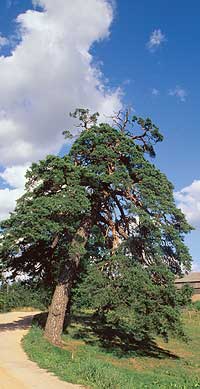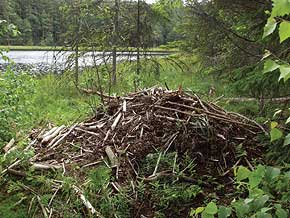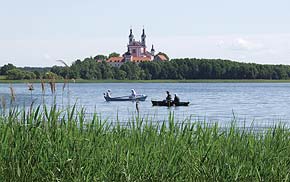|
15th |
WIGRY NATIONAL PARK
|
||||
|
of "WIGRY"
|
Bazyli Poskrobko
Talks in the Wigry National Park
This article contains a report of two conversations with inhabitants of the Wigry National Park, conducted by professor Poskrobko. The first interlocutor is a farmer in his prime, who presented his ambivalent attitude towards the need of protection within the Park. However, the interlocutor sees the need to keep the protection which would respect tradition.
The conversation oscillated around the ways how to steer the preservation of biological diversity. The scattering of rabies vaccine meant for foxes is one of example of that. Foxes are healthy and reproduce quickly. At the same time the activities conducted by the Green caused that fox fur-coats and fur-hats went out of fashion. Few people hunt foxes, which, in turn, ruthlessly hunt partridges and hares. It may happen that in a few years they will be in danger of extinction and will have to be taken under protection. These are the ways and effects of nature conservation.
The other interlocutor is a forester working for the Wigry National Park. His evaluation of the sense and need of protection has also historical references. In his opinion, the present state of diversity of nature has been shaped by man. Harmonious man-nature relationships lasted several thousand years, until capitalism came, which gave rise to rapid changes in the environment. However, capitalism reached the Suwalki Region only at the end of the 20th century.
The conversations quoted here concerned various matters, but within the same problem – the role of man in steering natural processes. Here are conclusions written down by the author of this article: – Nature conservation in Poland, mainly in the form of national parks, manifested its high effectiveness under the conditions of centrally managed economy. The market economy, which has been developing for fifteen years, decreases the effectiveness of bans and orders, and thus the meaning of this form of protection is becoming less and less important. Now, the leading role is being taken over by market instruments.
The preservation of the diversity of nature in the north-eastern Poland will be possible provided that the economic problems of the region have been solved. This calls for significant financial means which should be directed to the region and which will be spent on:
The preservation of biological diversity demands defining the resistance of ecosystems to pressure not only on the part of man, but also on the part of individual animal species under protection. It is essntial to establish a special European Union programme whose goal would be to finance the development of regions of particular importance to preservation of biological diversity. North-eastern Poland, together with the borderland areas of Belarus and Lithuania is an ideal place for activities for the benefit of of preservation of biological diversity. The main point of this concept is to give this area a special status called Central European Natural Bank of Biological Diversity. It would be one out of 3–4 types of areas in the European Union and it would serve all European nations.
|
||||
|
|
|



